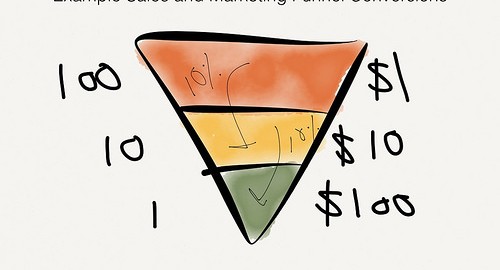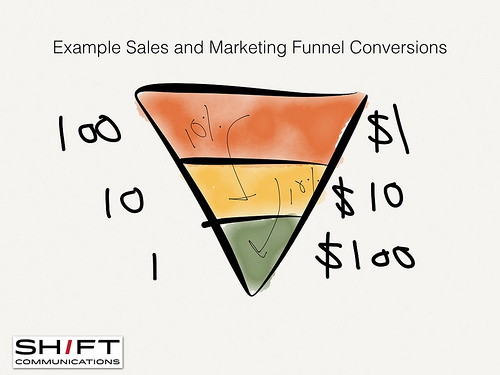As part of the AMEC Measurement Week, I’ve been asked to prepare some quick thoughts on how to explain PR metrics to stakeholders and executives. Rather than get highly technical, I thought I’d share a story about apple pie. Imagine that there were two grandparents and a grand-daughter named Mary that made and sold apple pie at a roadside stand. This pie was made from fresh Granny Smith and Gala apples grown and picked by Grandpa, cinnamon, ginger, sugar, and honey, baked to a golden crisp by Grandma, and sold by Mary at the stand.
Question for you: whose responsibility is it to sell pies? Who should be measured by sales of pies? The little girl, right? Her job is to look cute and sell pies.
Whose responsibility is it to make delicious pie? Grandma.
Whose responsibility is it to grow and pick the juiciest, sweetest apples? Grandpa.
So let me ask you this: should you hold Grandpa accountable for Mary’s sales? Maybe Mary was too busy texting on her Apple Watch to notice when potential customers came by. Maybe Grandma was an ex-hippie who had too many mind-altering experiences in the 1960s and she routinely used salt instead of sugar because she got confused. Should we hold Grandpa accountable for Grandma’s salty apple pies?
The answer is no. Here’s who should be held accountable for what:
- Grandpa should be held accountable for juicy, ripe apples.
- Grandma should be held accountable for delicious apple pie.
- Mary should be held accountable for pie sales.
Now, if Grandpa grew rotten, disgusting apples, then Grandma couldn’t bake pie, and Mary couldn’t sell pie. So Grandpa’s work isn’t without value or quantifiable measurement. It’s important. No one wants pie made of rotten apples. It’s just that we have to measure Grandpa on the quality of his work and its output, and no further.
Do you see where this is going? The job of effective public relations is to create and strengthen relationships with your audience. New audiences and loyal audiences are our business. They are our apples.
The job of effective marketing is to convince the eligible portion of that audience to consider doing business with us. Marketing’s primary output is lead generation. Leads are marketing pie.
The job of effective sales is to convert leads into customers. Sales’ primary output is revenue. This is broadly true across many different industries and kinds of business. It’s almost universal.
So to answer the question of what PR should be measured by, it’s about our ability to generate the right audiences. In the same way that you wouldn’t hold Grandpa accountable for Mary’s selling skills, you shouldn’t hold PR accountable for the skills of your sales team. You absolutely should hold PR accountable for generating the right audiences that are highly engaged, so that marketing can do its job of creating leads from it, and sales can sell to those leads. If PR is generating the wrong audience, it’s creating the equivalent of rotten apples.
How would you measure and quantify that? Let’s say Mary’s pie costs $ 100, and everything she does converts at a rate of 10%. It’s really good pie.
Mary needs 10 people to stop by the roadside stand in order to get 1 person to buy a pie. Those are Mary’s leads. Each lead is therefore worth approximately $ 10, because 1 sale is worth $ 100, and 9 out of 10 people don’t want apple pie. In order to get 10 people to stop by the stand, Mary needs her PR firm to create enough news and buzz to get 100 people to be aware that she’s selling pie. Thus, the value of every person the PR firm truly reaches in an engaged way – and we’re not talking media impressions here, more like website visitors – is worth $ 1.
That’s how we can start to measure PR in a way that’s meaningful, while still limiting our measurement to what we as PR professionals have control over.
Business Articles | Business 2 Community
(338)







